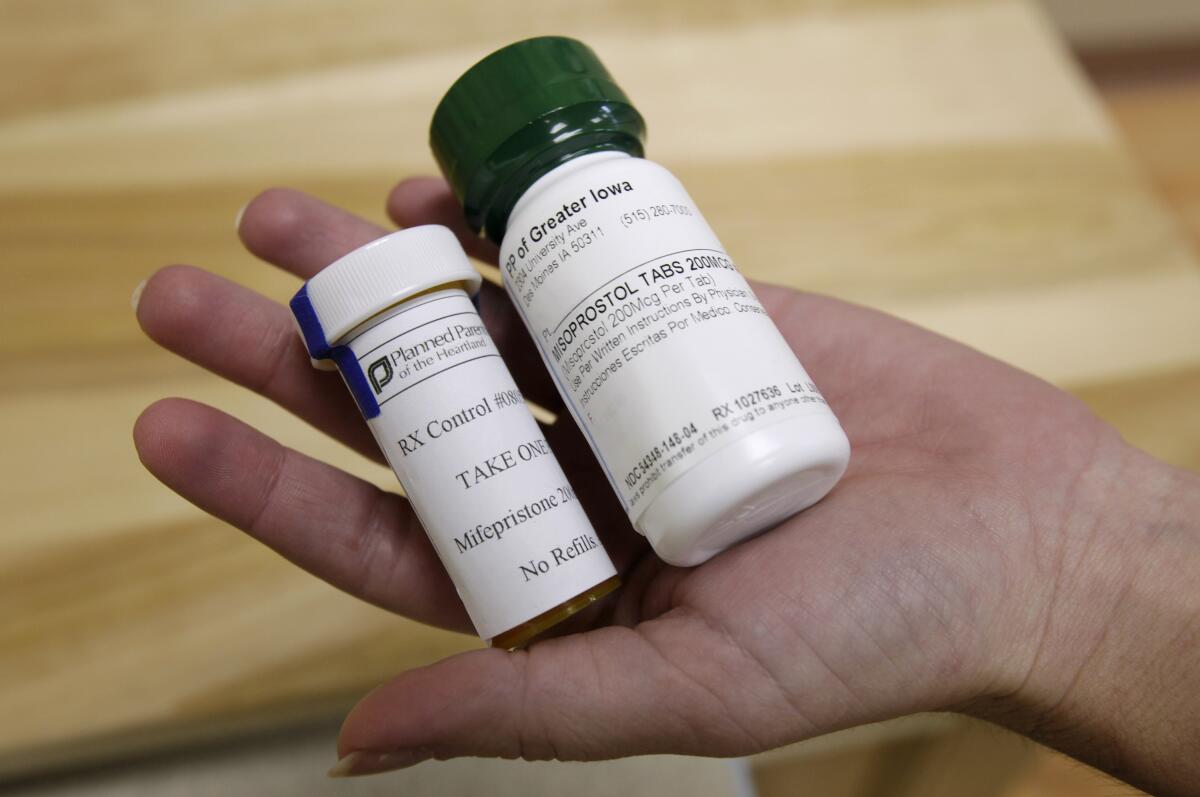Editorial: The only thing certain about medication abortion is the confusion over how to get it

A federal appeals court has ruled that mifepristone, one of two drugs used in medication abortion, can remain on the market as a court case over whether it was properly approved by the FDA continues. That isn’t as good or as straightforward as it sounds.
The decision by the 5th Circuit Court of Appeals on Wednesday changes only part of a Texas federal court judge’s ruling last Friday that completely blocked the Food and Drug Administration approval of mifepristone as the case makes its way through the courts. It allows the medication to be used as it was approved in 2000 — with a plethora of rules and restrictions removed in later years.
This ruling just creates more confusion for abortion providers and pregnant people in an already bewildering legal battle. For instance, in 2016 the FDA allowed abortion medication to be dispensed by trained healthcare providers who are not necessarily doctors. The drugs used — mifepristone followed by misoprostol — could be taken at home up to 10 weeks into a pregnancy. The FDA earlier this year permanently lifted the in-person dispensing requirements and approved the mail ordering of pills.
The ruling ignores good sense, sound medical judgment and more than two decades of safe usage around the world. Mifepristone has been used safely in the U.S. for more than 20 years.
But when mifepristone was first authorized in 2000, medication abortion pills could be dispensed only by a doctor in a clinic after three in-person medical visits and had to be taken in a doctor’s office, and it was available only up to seven weeks into a pregnancy.
Are providers really supposed to practice abortion care like it’s the year 2000? Will patients really need three in-person visits? Will midwives, nurse practitioners and physician assistants no longer be able to provide abortion pills? (A California law that took effect in 2014 allows them to provide first trimester abortion care of any kind.)
Most important, will doctors be able to prescribe it off-label, which doctors do regularly for medication they determine is safe for a use other than what the FDA approved? If so, that would mean they could prescribe up to 10 or 11 weeks off-label under the appellate court ruling.
And how is another federal court decision last Friday, which orders the FDA to continue to make mifepristone available in 17 states and the District of Columbia, affected by this appellate court ruling? Or is it?
The appellate panel appeared to believe the questionable horror stories about women experiencing severe bleeding (some bleeding during a medication abortion is normal) or needing a surgical abortion because the medication did not completely expel the pregnancy (something that happens in a very small number of cases). Mifepristone has been on the market for 23 years and has a serious adverse effect rate of about one-third of 1%. Five million people have taken the drug.
Jennifer Dalven, director of the ACLU Reproductive Freedom Project, said lawyers are still trying to figure out what the appellate court ruling means. She predicted that unless the Supreme Court steps in to restore the use of mifepristone as currently allowed by the FDA, “it will cause massive chaos and wreak havoc on access to abortion and miscarriage care.”
But that’s the whole point of the lawsuit that set this confusion in motion — to make it as difficult as possible to access the most common and affordable form of abortion. In the end, that lack of access is more likely to hurt people who can’t afford to travel to get an abortion.
The Department of Justice announced it will now appeal to the U.S. Supreme Court, which has a dismal record of protecting reproductive rights. But this is an attempt to take a safe, effective and thoroughly studied FDA-approved drug off the market not because of safety but because an antiabortion group wants it off the market. We can only hope the Supreme Court justices will see that and preserve access to this important and overwhelmingly safe medication.
More to Read
A cure for the common opinion
Get thought-provoking perspectives with our weekly newsletter.
You may occasionally receive promotional content from the Los Angeles Times.











